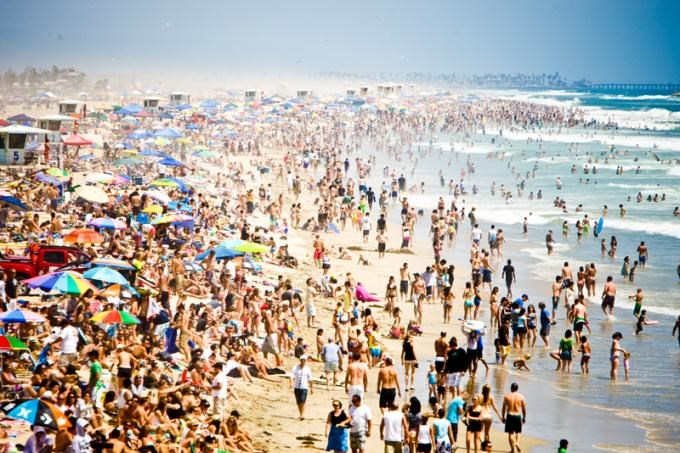Is Squamish's backcounrty the next Huntington Beach, CA?
Surfers, sun worshippers and ocean lovers line Huntington’s beaches, some of the busiest beaches in North America, with their towels and surfboards in rows like dominoes.
Just as Squamish is known for its backcountry adventures, biking trails and magnificent landscape, Huntington is known for its sea, surf and sandy beaches. Pictures from one hundred years ago show Huntington as a sleepy town dominated by the sea and surf. Today, tourists dominate pictures of the same spots. The journey to landscapes crowded by people didn’t happen overnight in Huntington, it happened in small increments.
Of course, Squamish is not Huntington. The point is more that unless we are thoughtful and deliberate with each decision, we may one day wake up to find corporate recreational amenities lined up like towels on a crowded beach throughout our backcountry.
An application to the provincial government is currently being considered for a yurt village on Crown land above the Sea to Sky Gondola that is proposed by a local company. In many ways, it is unfair to target this one proposal. After all, it is a fairly low impact plan, using existing forest service roads and compostable toilets on a previously logged site. Compared with the Garibaldi at Squamish proposal’s potential impact, it is a mosquito next to a Boeing 747, but in the bigger picture these one-offs become many; a ski resort here, a via ferrata there, a helicopter pad a short distance further and soon our wilderness is dominated by these tourist stops.
There is a cost to these individual proposals when looked at cumulatively.
Wildlife, for example, is greatly impacted. What of the goats and black bears that — pushed further and further up into the alpine by development in the District, pushed away by the gondola, pushed further up by humans on new hiking trails, pushed further up by helicopter noise — land at the new yurt village.
The goats will likely be pushed further afield and when those bears come upon the yurts, drawn by the smell of human food, will there be consideration of all that led them there or will tourists’ fear of bears lead to decisions to have them put down or transported further away from their natural home?
And what of the eco-tourists who come here to visit the rare, pristine wilderness on foot and find a generator and helicopter pad miles up from town? What cost to the overall economy will it all have?
This doesn’t mean this relatively small yurt proposal should be shot down, but what seems to be missing from all of the proposals for the Sea to Sky Corridor is an overall consideration of what our backcountry should be. We need to address this issue and soon, before we are what perhaps we never meant to become.
What do you think? Are we on track or off with this point of view? Let us know with a letter to the editor sent to news@squamishchief.com. Deadline for letters is Monday at 4 p.m.




